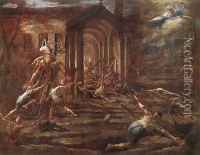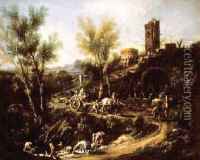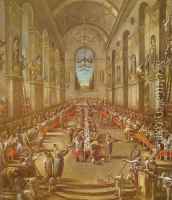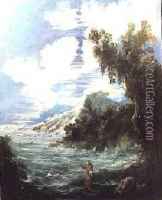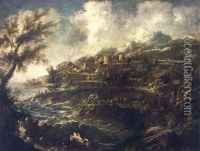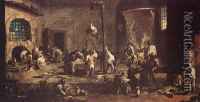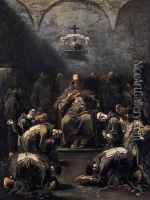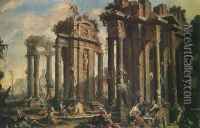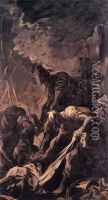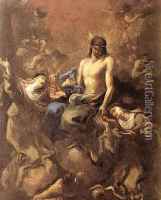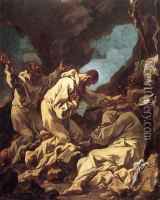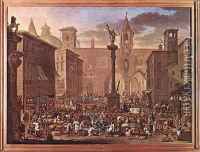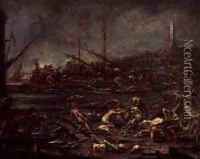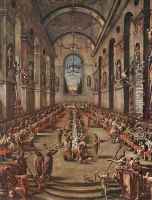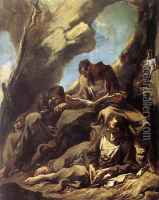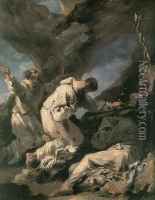Alessandro Magnasco Paintings
Alessandro Magnasco, also known as Lissandrino or Il Lissandro, was an Italian painter born on February 4, 1667, in Genoa. He is best known for his expressively painted and dynamic compositions that often depicted stormy landscapes, religious and genre scenes, and eccentrically garbed figures. Magnasco's work exhibits a unique blend of the Baroque style, with its emphasis on drama and emotion, and the emerging Rococo movement, which favored lighter themes and ornamental elegance.
Magnasco received his initial training from his father Stefano Magnasco, who was also a painter. He later moved to Milan, where he worked for the prominent art collector and patron Filippo Maria Visconti. In Milan, he was significantly influenced by the works of Antonio Tempesta and the Flemish school, which is evident in the animated treatment of his subjects and his loose, sketch-like brushwork. Magnasco's paintings often feature a stark contrast between the small, lively figures and the overwhelming natural or architectural environments they inhabit.
Throughout his career, Magnasco collaborated with other artists, such as Clemente Spera and Enrico Aliberti, often painting the figures in their landscapes or architectural settings. This practice was common in the period and allowed Magnasco to focus on the elements of his work that showcased his particular skills.
Magnasco's art was appreciated for its originality and individualism, but it did not always align with the tastes of his contemporaries, who sometimes found his work to be eccentric and his figures grotesque. However, his expressive style and the atmospheric quality of his scenes were influential on later generations of artists, particularly those in Northern Italy. His works can be found in many major museums, including the Uffizi Gallery in Florence, the Brera in Milan, and the Louvre in Paris.
Alessandro Magnasco's career spanned over five decades, and he continued to paint until his later years. He died on March 12, 1749, in Genoa. While he was somewhat forgotten in the centuries following his death, modern art historians have reevaluated his work, recognizing him as an important figure in the transition from Baroque to Rococo art and for his unique contributions to the Italian painting tradition.
